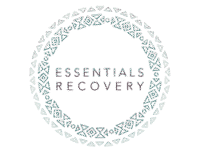Suboxone is a medication commonly used in the treatment of opioid addiction. It plays a crucial role in helping individuals manage withdrawal symptoms and reduce cravings, making recovery more achievable. Understanding how Suboxone works, its benefits, potential drawbacks, and its place in a broader treatment plan can empower individuals and families affected by opioid use disorder.
What Is Suboxone?
Suboxone is a prescription medication that combines two substances: buprenorphine and naloxone. Buprenorphine is a partial opioid agonist, meaning it interacts with opioid receptors in the brain but produces a weaker effect than full opioids like heroin or oxycodone. Naloxone is an opioid antagonist that blocks opioid effects and is included to discourage misuse.
This combination helps reduce withdrawal symptoms and cravings without producing the high associated with other opioids. Suboxone is taken as a sublingual film or tablet, placed under the tongue to dissolve.
How Suboxone Supports Recovery
Suboxone helps individuals by stabilizing their brain chemistry and reducing the cycle of highs and lows often associated with opioid use. People in early recovery often face intense physical and emotional discomfort, which can lead to relapse. Suboxone makes it easier for them to engage in therapy, counseling, and other support services without being distracted by withdrawal symptoms.
Because it reduces the need to seek out and use opioids, Suboxone also helps break the behavioral patterns that reinforce addiction. This gives individuals time to work on the underlying issues that contribute to substance use, such as trauma, mental health disorders, or social stressors.
Initiating Treatment with Suboxone
Before starting Suboxone, individuals must be in a state of mild to moderate withdrawal. Starting it too soon after opioid use can trigger precipitated withdrawal, a sudden and intense onset of symptoms. Medical professionals carefully assess each person’s condition and history to determine the appropriate timing.
Treatment usually begins in a supervised setting, such as a clinic or treatment center, but may eventually transition to outpatient care. Patients are typically monitored closely in the beginning to ensure they are responding well to the medication and not experiencing side effects.
Benefits of Suboxone
One of the biggest advantages of Suboxone is its ability to stabilize individuals early in recovery, giving them a better chance at long-term success. Some other key benefits include:
- Lower risk of misuse compared to full opioid agonists
- Reduced cravings and withdrawal symptoms
- Improved ability to focus on therapy and life responsibilities
- Greater accessibility due to availability in office-based settings
- Long-acting effects, allowing once-daily dosing
Suboxone has also been shown to reduce overdose deaths, especially when used as part of a comprehensive treatment plan.
Misconceptions About Suboxone
Despite its proven benefits, Suboxone is sometimes misunderstood. One common myth is that using Suboxone is simply replacing one drug with another. However, this overlooks how Suboxone works. Because of its pharmacological properties, it doesn’t produce the intense euphoria of other opioids, making it safer and more sustainable for long-term use.
Another misconception is that people on Suboxone aren’t truly sober. Recovery is a deeply personal journey, and for many, sobriety includes the use of medications like Suboxone to manage a chronic condition. Like insulin for diabetes, Suboxone is a tool that supports wellness, not a sign of weakness.
Suboxone vs. Other Medications
Suboxone is one of several medications used to treat opioid addiction. Others include methadone and naltrexone.
- Methadone is a full opioid agonist and must be administered through specialized clinics. It’s highly effective but comes with stricter regulations.
- Naltrexone is an opioid antagonist that blocks the effects of opioids entirely, but it requires complete detoxification before use and may not help with cravings as effectively for everyone.
Suboxone offers a middle ground—less risk than methadone, but more flexibility than naltrexone. The choice between these options should be made in collaboration with a healthcare provider who understands the individual’s history and needs.
How Long Do People Stay on Suboxone?
There is no one-size-fits-all timeline for Suboxone use. Some people use it for a few months, while others may benefit from long-term or even lifelong maintenance. The decision depends on multiple factors, such as the length and severity of the addiction, support systems, co-occurring conditions, and individual goals.
Tapering off Suboxone should only be done under medical supervision. Doing so too quickly can lead to a return of cravings and an increased risk of relapse. For many, staying on a stable dose provides the foundation they need to rebuild their lives and maintain recovery.
Side Effects and Considerations
Like any medication, Suboxone can cause side effects. Common ones include:
- Headache
- Nausea
- Constipation
- Insomnia
- Sweating
In rare cases, more serious effects like liver problems or respiratory issues can occur. It’s important to report any concerning symptoms to a healthcare provider. Most side effects diminish over time or can be managed with dosage adjustments or supportive care.
Suboxone can also interact with other medications, so individuals should always inform their doctor of any other prescriptions or supplements they’re taking.
Suboxone and Mental Health
Many people with opioid addiction also struggle with mental health issues like depression, anxiety, or PTSD. Suboxone can help create enough stability to begin addressing these concerns through therapy or psychiatric care. In some cases, additional medications may be prescribed to manage mental health symptoms.
By reducing the chaos of active addiction, Suboxone opens the door to more consistent and effective mental health treatment. It also improves sleep and mood regulation, which are essential for emotional recovery.
Incorporating Suboxone into a Broader Treatment Plan
While Suboxone is a powerful tool, it’s not a standalone solution. Recovery requires addressing the psychological, social, and behavioral components of addiction. Effective treatment plans often include:
- Individual counseling to explore personal triggers and develop coping strategies
- Group therapy to provide peer support and reduce isolation
- Family involvement to heal strained relationships and create accountability
- Lifestyle changes, such as improved nutrition, exercise, and mindfulness practices
- Case management, helping with employment, housing, or legal issues
When used as part of a comprehensive approach, Suboxone enhances the likelihood of lasting recovery.
Accessing Suboxone Treatment
Thanks to recent changes in policy, more healthcare providers are now authorized to prescribe Suboxone. This has improved access for many people, especially in rural or underserved areas. Telemedicine has also made it easier to start and maintain treatment.
Insurance often covers Suboxone, though coverage can vary. Some treatment centers offer sliding-scale fees or assistance programs. It’s important to research local providers and ask questions about the intake process, costs, and expectations.
Suboxone and Relapse Prevention
Relapse is a common part of recovery, but Suboxone can help reduce its likelihood. By controlling cravings and minimizing the physical symptoms that often lead to relapse, it gives individuals more control over their choices. Continued use of Suboxone, paired with therapy and support, can help prevent high-risk situations from turning into setbacks.
If relapse does occur, it’s not a failure. It’s a signal to reassess the recovery plan and make necessary adjustments, which may include changes in dosage, support services, or treatment intensity.
Conclusion
Suboxone is a proven and effective tool for treating opioid addiction. It offers a way for individuals to manage withdrawal, reduce cravings, and begin healing both physically and emotionally. When integrated into a comprehensive treatment plan that includes counseling, lifestyle changes, and ongoing support, Suboxone significantly improves the chances of sustained recovery.
Everyone’s journey is different, and recovery is rarely a straight path. For many, Suboxone provides the stability and hope needed to walk that path with strength and confidence. Seeking guidance from qualified professionals and staying connected to a support network can make all the difference in achieving long-term success. Call us today at 855-509-1697.



